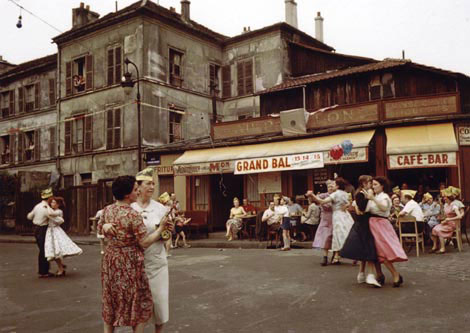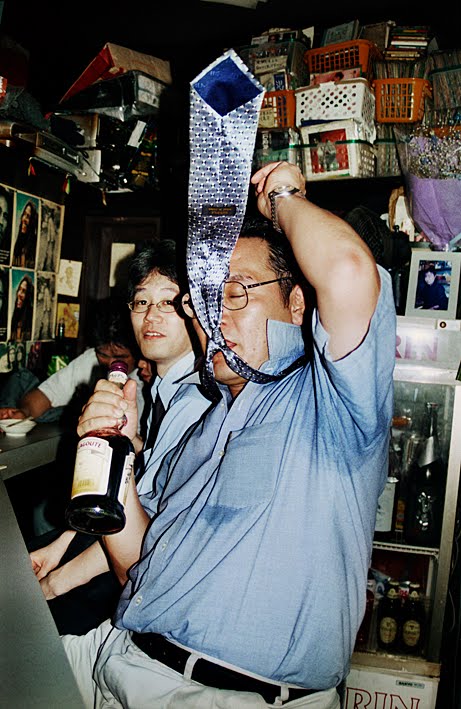 When I was in Stockholm for the opening of Tokyo Stories, Maria from the Kulturhuset spoke to me about a young photographer who is half-Swedish and half-Japanese, Goro Bertz. Bertz doesn't have a functional website that I could find, but I did manage to track down some of his images on a few Swedish blogs. Perhaps it's wrong to suggest that Bertz is half-Swedish, half-Japanese. The reason I mention this is because he is clearly influenced by Japanese photography and shoots on the sacred street photography terrain that is Shinjuku, but, although his mother is Japanese he was born and raised in Sweden and is coming to this photography from the perspective of an outsider. What I found particularly interesting in his work is how it seems influenced both by Christer Strömholm and Anders Petersen as well as by Japanese photographers, most obviously Daido Moriyama. He juggles with colour, black-and-white and with different styles, and wears his influences on his sleeve, but I found that he manages to weave these pretty diverse elements into a very coherent whole that feels quite personal and sincere. There is an interesting online exhibition including a long text by Bertz (in English) which gives a good sense of his approach as well as a short slideshow complete with dramatic narration (in Swedish) which are worth a look to see more of his work. Definitely one to watch.
When I was in Stockholm for the opening of Tokyo Stories, Maria from the Kulturhuset spoke to me about a young photographer who is half-Swedish and half-Japanese, Goro Bertz. Bertz doesn't have a functional website that I could find, but I did manage to track down some of his images on a few Swedish blogs. Perhaps it's wrong to suggest that Bertz is half-Swedish, half-Japanese. The reason I mention this is because he is clearly influenced by Japanese photography and shoots on the sacred street photography terrain that is Shinjuku, but, although his mother is Japanese he was born and raised in Sweden and is coming to this photography from the perspective of an outsider. What I found particularly interesting in his work is how it seems influenced both by Christer Strömholm and Anders Petersen as well as by Japanese photographers, most obviously Daido Moriyama. He juggles with colour, black-and-white and with different styles, and wears his influences on his sleeve, but I found that he manages to weave these pretty diverse elements into a very coherent whole that feels quite personal and sincere. There is an interesting online exhibition including a long text by Bertz (in English) which gives a good sense of his approach as well as a short slideshow complete with dramatic narration (in Swedish) which are worth a look to see more of his work. Definitely one to watch.
Some things I bought this year
I've seen quite a few end of year lists popping up over the last week. There are the best books of 2009 lists, the more eclectic lists of "stuff I liked this year", the lists of books acquired in 2009 and many more. I think you need to be a breakfast-lunch-and-dinner kind of consumer of photo-books to post a best books of 2009 list and having just discovered a great many fantastic-looking ones through the future of photo-books discussion, I am not going to stick my neck out on that one. Instead in order to jump onto the list-mania bandwagon, I am going to go with a list of a few of the photo items that I bought in 2009 (these weren't necessarily made in 2009). Looking back over the year, I think this is an interesting way of seeing trends in the things that you gravitate to and also seeing how much money you wasted on things that you spend no time with at all.
Some photographic things that I bought in 2009
(Note: I am in a fortunate position where a number of books that come into my possession I don't actually have to pay for, so there are a number of terrific books that I discovered this year that won't make it on to this list)
Anders Petersen & J.H. Engström, From Back Home (Bokförlaget Max Ström, 2009)

This won the Author Book Award at Arles 2009. I posted a review a while back.
Akihide Tamura, Afternoon (M Light label No.1, 2009)
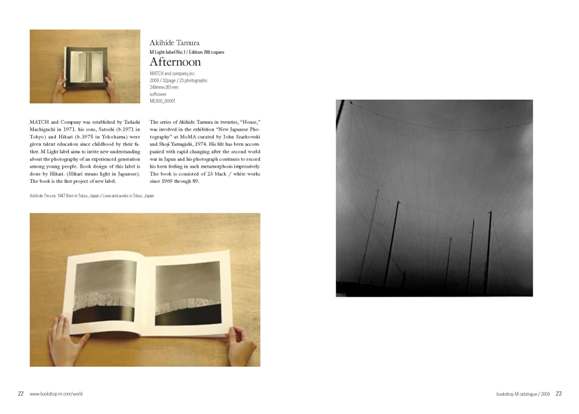
Although I just got this and have already posted about it, I get the feeling this is one that I will keep coming back to.
Ryuji Miyamoto, Cardboard Houses (signed, Bearlin, 2003)

Beierle + Keijser's "Becher box": Jogurtbecher

I have already spent the best part of an evening with E deciding what images we are going to use in our Jogurtbecher grid. And I actually hate yoghurt.
Michio Yamauchi, Stadt (Sokyu-sha, 1992)

Naoya Hatakeyama, A Bird (Taka Ishii, 2006)

OK I cheated, I didn't actually buy this, but this is probably the book that I have gone back to most frequently this year so it had to be included. Check out Jeff Ladd's review here to get an idea why.
Ikko Narahara, Pocket Tokyo (Creo, 1997)

Eikoh Hosoe, A Butterfly Dream (signed, Seigensha, 2006)

The extragavance of the year. This book was produced as a companion to the first edition of Kamaitachi. Hosoe presented it to Kazuo Ohno for his 100th birthday, shortly before his death. (As Michael rightly pointed out, Ohno is still around!)
Review: From Back Home (book and exhibition)
"The land between Klarälven River and the chestnut tree at Ekallén is full of little hard memories of sad and lonely times, but there is also a streak of warm confidence that runs all the way up to Älgsjövallen, a place of fairy tales and inquisitive moose." Anders Petersen
From Back Home is a collaboration between two of Sweden's leading photographers, Anders Petersen (b. 1944) and JH Engström (b. 1969), focusing on the Värmland region, one of the most sparsely populated provinces in Sweden. The two photographers have a shared relationship with the land—they both come from this region—as well as a strong personal relationship. Engström worked as Petersen's assistant and the older man is a major influence for him.
The book
 From Back Home won the Author Book Award at Arles 2009 and deservedly so. The book is split into two parts, first Petersen's images followed by Engström's. Petersen's section starts with the birth of a child suggesting that this will be a journey of intense discovery. The first few images immediately set a mystical, slightly oppressive, dark and lonely tone.
From Back Home won the Author Book Award at Arles 2009 and deservedly so. The book is split into two parts, first Petersen's images followed by Engström's. Petersen's section starts with the birth of a child suggesting that this will be a journey of intense discovery. The first few images immediately set a mystical, slightly oppressive, dark and lonely tone.
I find that Petersen's vision has become more concentrated and more potent with time. His signature high-contrast black-and-white imagery crackles with energy as we are taken from birth to death and everything in between (although love seems to have the last word). Petersen's series centres mainly on the people that cross his path, photographs of random encounters mix with those of friends, family and lovers. The series is also punctuated with little details of the surrounding landscape (an empty skatepark surrounded by forest, a tree snapped in half). Petersen has said before that he is seeking to become almost animal-like in his approach, to become a dog when he photographs, and this also comes through clearly in his raw, angular images. Animals also appear intermittently as subjects, reminding us of our mortality and of the fact that we are just another creature that will come and go.
The cover image (above), a photograph by Petersen of his mother, is one of the most haunting portraits I have come across in some time. It is full of dignity, an almost classical image, but there is a certain distance between the photographer and his subject which seems to contain all of the complexity of Petersen's relationship with 'home'.
The second half of the book is devoted to Engström's work. As opposed to Petersen, Engström hasn't adopted and honed a signature style, instead mixing lo-fi, washed out colour images, with cheap flash portraits or high-contrast black and white landscapes. He focuses mainly on life at night, from the drunken fumblings of teenagers in the forest to old couples pressed together at a dance. His photographs seem instinctive (in his introduction he writes "I've returned to something that my body and emotions recognize"), and he succeeds in creating a sense of openness and immediacy. There are also a number of photographs of collages of several polaroids or small prints: a device that seems to be a way for Engström to revisit his memories, heightening the sense of return rather than of discovery.
Unfortunately, I found that his work suffered a little when juxtaposed with Petersen's. The power and refinement of the older photographer's images slightly overpower Engström's looser and more diffuse approach. I also found some of the juxtapositions of images bizarre, with a result that seemed to add up to less than the sum of its parts.
Despite this minor reservation, this is a very successful book and the relationships between these two photographers and this remote region is undeniably powerful and complex. The printing of the book is beautiful and I found that the black-and-white work was particularly well reproduced.
From Back Home (Stockholm: Bokförlaget Max Ström, 320 pages, hardcover, 2009).
Rating: Highly recommended
The exhibition
The From Back Home project has also led to an exhibition, which is currently on show at Galerie VU in Paris. In addition to the prints from the From Back Home series, the exhibition also includes an additional series of vintage works by both photographers.
For Petersen's From Back Home work, it was interesting to see the prints hung in a floor-to-ceiling grid three prints high. The prints are not quite as good as the reproductions in the book and many of them were buckling slightly as they did not seem to have been dry-mounted (I heard Petersen pointing this out to the gallery so this may end up getting fixed), but the full wall of images works well for this work. The vintage work that is shown alongside these is Gröna Lund, a series of images taken at an amusement park in Sweden in the late 1960s and early 1970s. I found it fascinating to see the evolution in Petersen's approach. His photographs have gained a heightened intensity and visceral energy, making his earlier work seem almost restrained. His latest work feels a lot closer to Moriyama's sensibility, darker and more animalistic.
In Engström's case the second series of work on show are unseen 'vintage' (it always strikes me as strange to call something that is only a few years old 'vintage') prints from his Trying to Dance series. Although I'm not sure that the 'vintageness' is so important to his work, this is one of his strongest series in my view and an interesting precursor to From Back Home. Overall I found that this latter work came through better in the exhibition than in the book. The intentionally haphazard framing and hanging of his prints worked well for me and gave the impression of being invited into Engström's living room. I was particularly struck by a group of six highly grainy and contrasty aerial photographs of the Värmland landscape which are hung separately to the rest of the prints, a step back from those moments of intimacy that lends a darker edge to the series.
I would recommend the book over the exhibition, as I think From Back Home is probably better-suited to the book format, but the show is definitely worth a visit.
From Back Home. Anders Petersen and JH Engström. Galerie VU, 11 September - 31 October 2009.
Rating: Recommended
Update: This review has also been published on Lensculture along with a few other photobook reviews that I have been contributing to Jim's excellent webzine.
"La rentrée" in Paris: upcoming exhibitions
As Paris slowly drags itself out of its long summer slumber, I thought this would be a good time to draw up a list of a few of the forthcoming photography exhibitions to look out for when the city switches itself back on in the next couple of weeks.
- The Fondation Henri Cartier-Bresson in the 14th will be showing vintage work by August Sander taken from the collection of the SK Stiftung Kultur in Cologne. Sander was a master of the portrait and, with a lot of work that will be shown for the first time in Paris, this one should not be missed. From September 9th.
- Galerie Vu in the 4th will be showing work taken from the collaboration between Anders Petersen and JH Engström, From Back Home (the book won this year's Author Book Award at Arles and I recommend tracking it down if there are any copies left). Engström was Petersen's assistant in the early 90s and their photographic wanderings intertwine beautifully in this project. From September 11th.
- Vera Lutter will be having her first solo show at Galerie Xippas in the 3rd with work spanning the past ten years of her career. Lutter makes pin-hole cameras out of entire rooms and the resulting photographs of architectural and industrial landmarks are monumental in scale. From September 12th.
- For some more photographic portraiture, but in a totally different vein to Sander, Erwin Olaf will be exhibiting recent work taken from the series Laboral Escena at the Magda Danysz Gallery in the 11th. The work, inspired by the eponymic building in Gijon, Spain, consists of portraits in period costume reminiscent of "the classic paintings of the Spanish Gold century." Some of his work is a little too cold and metallic for my liking, but I am curious to see these. From September 12th.
- The Quai Branly Museum in the 7th is holding the second installment of its photography biennale, Photoquai. Although the first edition of this event did not exactly fulfill its potential, it still promises to be a good opportunity to discover work that doesn't make it onto the conventional photography circuit. From September 22nd.
- The blockbuster show of the the next few months promises to be the Pompidou's Subversion des images, a huge (over 400 pieces) overview of surrealist photography and film including work by Man Ray, Hans Bellmer, Claude Cahun, Raoul Ubac, Jacques-André Boiffard, Maurice Tabard, André Breton and Paul Eluard. This should make an excellent companion to the Bilder träume exhibition of surrealist painting and sculpture which is on in Berlin until November 22nd. From September 23rd.
- And finally, the Marais' Galerie Particulière is reopening today so you have another chance to catch Metropolis, a great exhibition of work taken from Michael Wolf's Architecture of Density and Transparent City series (I reviewed the show when it opened in July). Until September 26th.
Arles 2009: 40 years and Nan Goldin
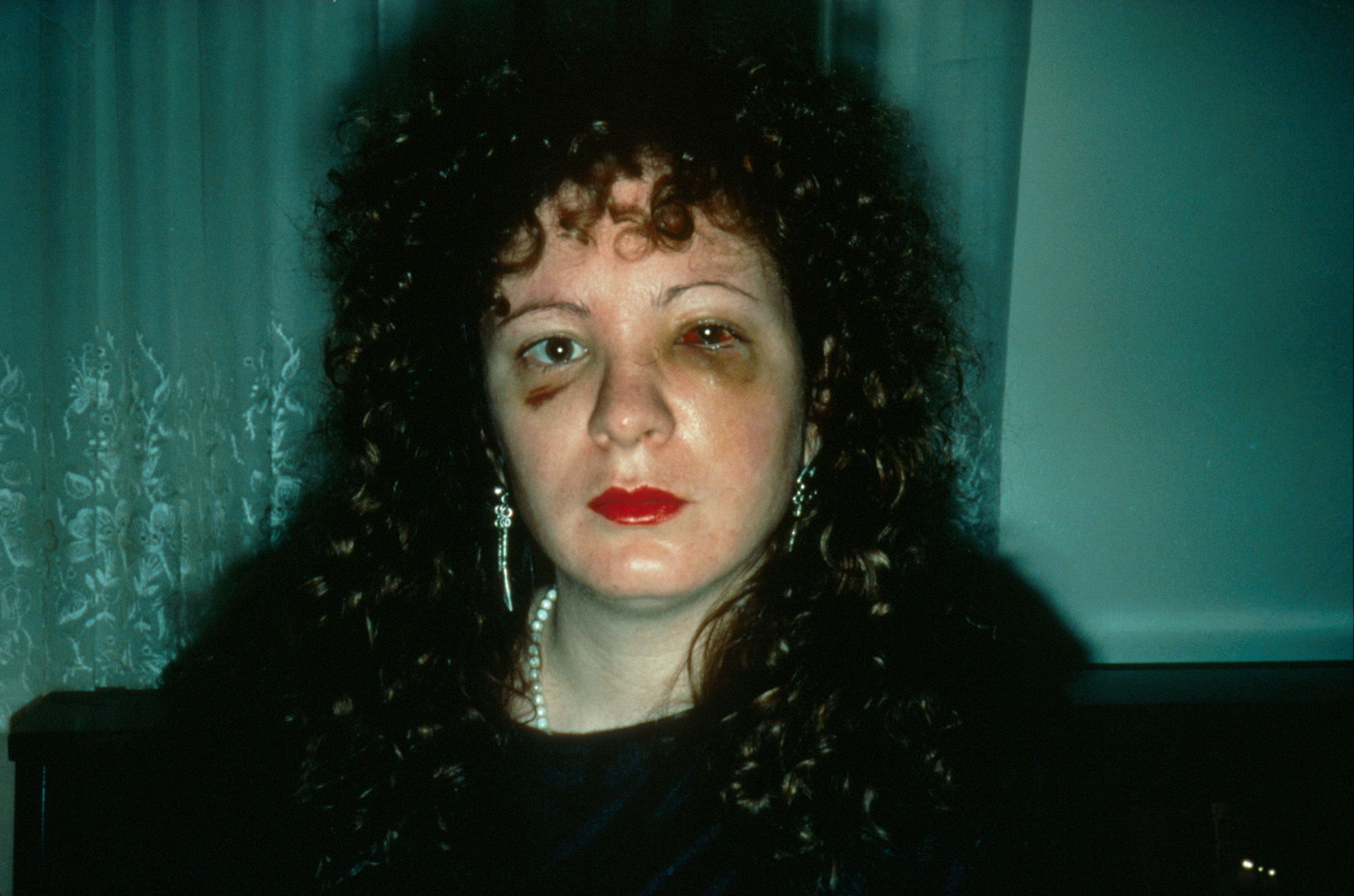 I have finally managed to sit down and collect my thoughts about this year's Rencontres d’Arles festival. For Arles’ 40th anniversary, I decided to try and cover the festival in some detail. In this post I will be giving my overall impressions and in the next few days I will follow up with reviews of the exhibitions that I considered to be highlights.
I have finally managed to sit down and collect my thoughts about this year's Rencontres d’Arles festival. For Arles’ 40th anniversary, I decided to try and cover the festival in some detail. In this post I will be giving my overall impressions and in the next few days I will follow up with reviews of the exhibitions that I considered to be highlights.
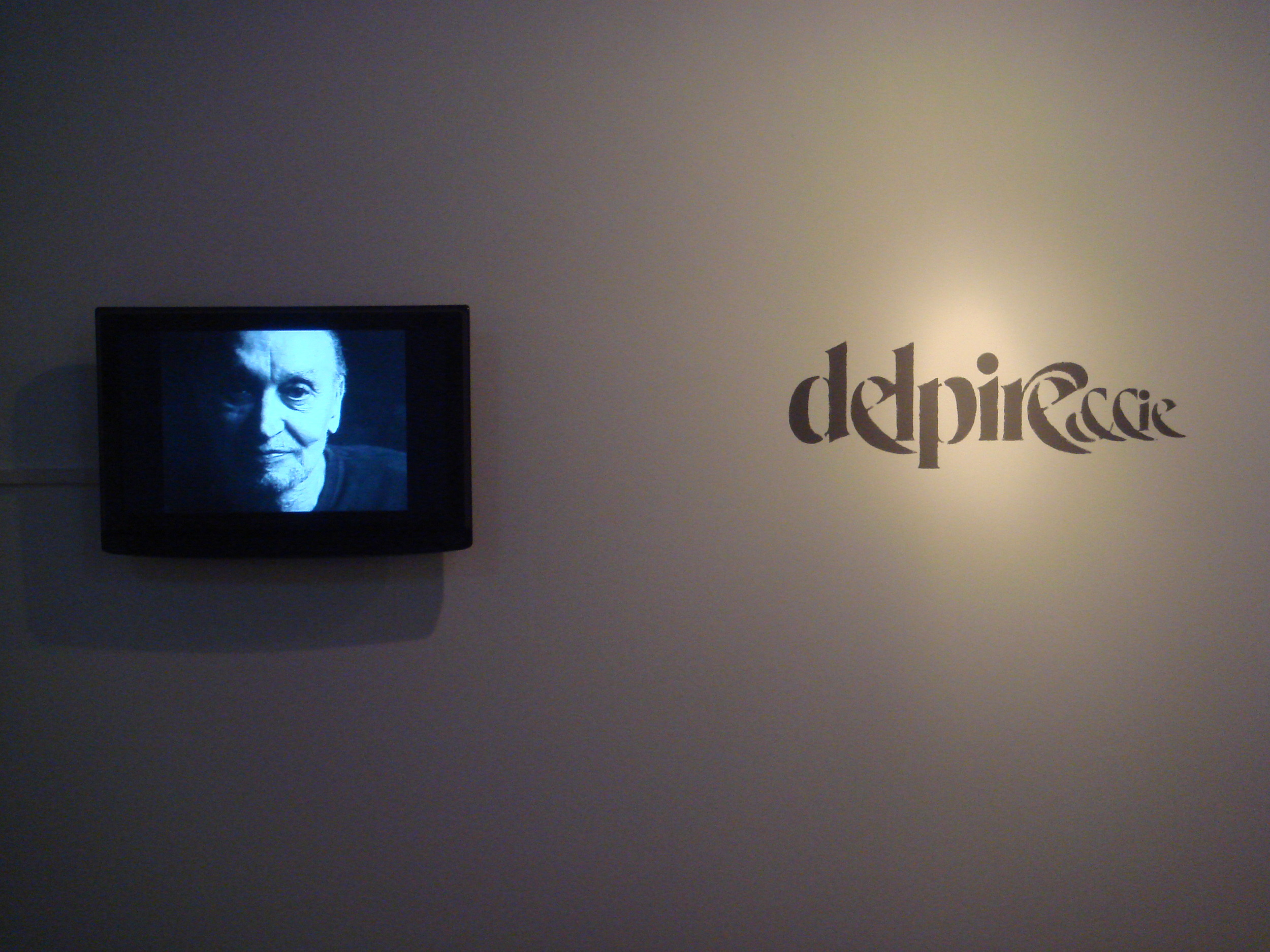 When it comes to festivals, I have always found that birthdays tend to be mixed affairs (in fairness 40th birthdays have never been easy for anyone). Paying tribute to 40 years of photography while still looking to the future (or at least to the ‘now’) is no small task. Given the mandatory set of exhibitions celebrating Arles glorious past (a tender look at the extraordinarily prolific career of the French publisher and curator, Robert Delpire; an exhibition of new work by Lucien Clergue, an Arlésien photographer and one of the founders of the Rencontres; a Duane Michals retrospective, including a lot of work which has been exhibited before at Arles; and a ‘photo-album’ show allowing the audience to take a nostalgic stroll through 40 years of the festival’s history), the choice of the guest curator was always going to have a big impact, perhaps even more so than in a ‘normal’ year.
When it comes to festivals, I have always found that birthdays tend to be mixed affairs (in fairness 40th birthdays have never been easy for anyone). Paying tribute to 40 years of photography while still looking to the future (or at least to the ‘now’) is no small task. Given the mandatory set of exhibitions celebrating Arles glorious past (a tender look at the extraordinarily prolific career of the French publisher and curator, Robert Delpire; an exhibition of new work by Lucien Clergue, an Arlésien photographer and one of the founders of the Rencontres; a Duane Michals retrospective, including a lot of work which has been exhibited before at Arles; and a ‘photo-album’ show allowing the audience to take a nostalgic stroll through 40 years of the festival’s history), the choice of the guest curator was always going to have a big impact, perhaps even more so than in a ‘normal’ year.
Nan Goldin seemed like an interesting choice: despite her rise to fame she remains a prickly, startingly honest, both brutal and fragile creature who will charge straight at anything resembling ‘the establishment’. Having heard her speak several times during the festival (despite lots of official events, she did her rebellious image justice, showing up drunk or very late more than once), she knows her mind and speaks it. Goldin also knows what she likes when it comes to photography. Her 13 guests show her strong leaning towards what could be called a ‘photography of the intimate’: J.H. Engström, Leigh Ledare, Antoine d’Agata, Jim Goldberg, Jean-Christian Bourcart, Annelies Strba. This collection of exhibitions, Ça me touche (It touches me), bears its name well: it came through clearly that this was all work that touched Goldin “in some profound way.” This need to be touched seems to go beyond the work, as Goldin is very close to several of her guests (she referred to Engström and Bourcart’s families as her muses). With two projections of her own work (Sisters, Saints and Sybils and The Ballad of Sexual Dependency) and an exhibition of her personal collection, Goldin’s footprint was stamped forcefully on Arles 2009.

Despite the honesty of her approach and choices, overall I was disappointed. I think Goldin has a real eye for the sincere and much of the work has an undeniable, visceral, emotional power. But, with 13 exhibitions in one massive warehouse space: massive prints of J.H. Engström’s newborn twins and their mother’s bloody placenta; Leigh Ledare’s mother fucking, fellating and stripping for her son’s camera; Antoine d’Agata caught in a 20-year Baconian cycle of drug and sex-addled self-destruction; Jean-Christian Bourcart’s distressing document of the lives of the inhabitants of the US’s poorest city (Camden, NJ); ending with Jim Goldberg’s experimentation with young runaways in San Francisco; can we really be expected to have any emotion left at all? Not all of the work explores the same difficult emotional terrain, but this difference gets diluted by the ‘full frontalness’ of these artists.

There were a few misses (David Armstrong’s beautifully installed and completely forgettable images of young, pretty boys, Christine Fenzl’s worthy but incredibly bland documentation of street football, and Jack Pierson’s large folded photos of stuff that he walked past one day—incidentally Pierson’s ‘statement’ is a must-read), but individually most of the work on show here is interesting (in terms of its approach rather than photographically). Unfortunately, the impact of this work was diluted by the sheer quantity of it. Three exhibitions stood out for me: Anders Petersen’s dark, primitive, but dignified gaze at life on society’s edges, Marina Berio’s beautiful blow-up charcoal drawings of negative images and Lisa Ross’s exploration of the physical manifestations of faith in China’s Xinyiang province.

Towards the end of the festival, I heard Goldin reveal some of her thinking on photography. She explained that for her, photography has almost entirely lost its integrity, that it is difficult to believe images anymore. Of those very few photographers that she still admires, most are dead, and the others she keeps close to her. And as for her own work, she says she no longer has any interest in still photographic images. She only exhibits in the form of projections and she is currently exploring new ideas which move even further away from still photograph. This could be interpreted as pushing the boundaries of photography, but in her case it feels more like she is turning her back on it. I think Goldin remains an interesting artist whose struggle with life continues to provoke her to make challenging and powerful work, but as the guest curator of a major photography festival like Arles, her vision felt too narrow.

My highlights of Arles 2009 (which I will come back to in more detail in further posts) tended to go against the Goldin grain: Naoya Hatakeyama’s Scales and Maquettes/Light, Magda Stanova’s intelligent commentary, Without Sanctuary’s harrowing exploration of the darkest side of ‘vernacular photography’ (if postcards of lynchings can still bear that label), and an event which wasn’t even on the official festival programme, Chambres d’échos, an exhibition of the Musée Reattu’s photography collection which succeeds in creating fascinating resonances from confronting different kinds of work in exhibition rooms set up as echo chambers.
You will probably remember that there was quite a lot of criticism in the blogosphere of this year’s NYPH (somebody still has to explain that ridiculous acronym to me) and I think it is worth remembering that these events are pretty difficult to pull off and the fact that they manage to happen at all is worth applauding. Even if I felt disappointment at some of the choices this year, Arles still manages to be a huge injection of photographic adrenaline in a way that feels festive and celebratory. On it’s 40th birthday Arles felt very much like it was in the middle of a mid-life crisis, but one with glimpses of a promising future.
Update: Further reading Jeffrey Ladd on Nan Goldin Evan Mirapaul on Arles '09




